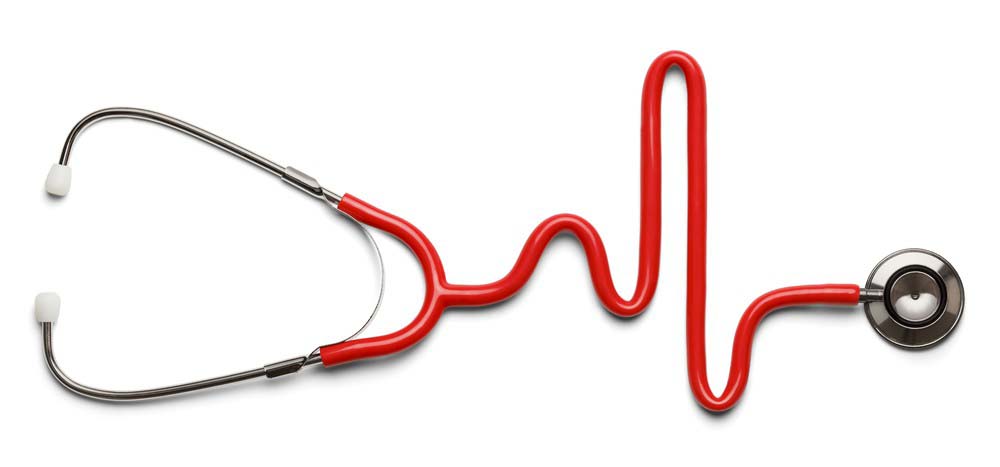The Long Path of Medical Device Biocompatibility Testing and Standards Created the Safest Medical Devices Today
Science is the basis for developing standards. A Canadian medical historian, Jacalyn Duffin, recounted a story.
In 1816, while examining a female patient with heart disease, Dr. René Laennec faced a conundrum: He needed to hear what was ailing her but was reluctant to press his ear to the woman’s chest. So, the clever doctor improvised, rolled up a notebook into a tight cylinder. He put one end on his patient’s chest and the other to his ear. “And he heard, lub-dub, lub-dub, lub-dub, the sound of the heart,” says medical historian Dr. Jacalyn Duffin.

A lot has happened between the time of that makeshift stethoscope and the requirements for biocompatibility testing for medical device approvals today. Now there are biocompatibility standards and guidance documents that ensure stethoscopes and other medical devices are as safe as possible. Medical devices have become complex and include robotics, batteries, nanoparticles, and cleaver polymers. Even some non-complex medical devices require biocompatibility testing.
The ISO 10993 series provide a useful guide for optimizing risk management efforts in regard to the biological evaluation of medical devices. The documents in this series are harmonized with the EU medical devices directives. This series of standards covers the medical device biological evaluation process (Part 1), animal welfare requirements, (Part 2), biological testing (Parts 3–6, 10, 11, and 20), ethylene oxide residuals (Part 7), and chemical/material characterization (Parts 9, 13–15 and 17–19). They represent, in part, why medical devices are safer today than ever before as long as plans are developed and implemented.
ISO 10993-18:2020 “Chemical characterization of medical device materials within a risk management process” was published in January 2020. The standard brings a lot more clarity and consistency to chemical characterization and medical device risk management. Tests must now be more sensitive and meet standard extraction requirements.
Regulators all over the world are placing an increasing emphasis on characterizing the chemical components of devices, including colorants and polymers, through extractable leachable testing using various analytical methods. This data can, in part, be used to provide a more comprehensive representation of device safety.

In reviewing the Class 1 US Food and Drug Administration (FDA) database for medical device recalls since 2013, there are clear cases of products that had issues that could have been identified during the biocompatibility evaluation process had there been monitoring and updates to their biological evaluation plan. Please see this link, https://www.accessdata.fda.gov/scripts/cdrh/cfdocs/cfRES/res.cfm as well as the link below.
The FDA on September 4, 2020, released updated guidance on the Use of International Standard ISO 10993-1, “Biological evaluation of medical devices – Part 1: Evaluation and testing within a risk management process.”

These two documents, the ISO standard, and the FDA guidance will accelerate market access and assist both founders and manufacturers to manage risks of biocompatibility. They provide the testing and evaluation best practices to ensure that all equipment and devices are not harmful in any way to our bodies. Devices that have any contact with the body will need to undergo specific testing to meet these enhanced expectations that are meant to keep patients and medical professionals safe from toxins, carcinogens, and adverse sensitization effects. This is all meant to achieve biocompatibility in medical devices, which the FDA defines as “the ability of a device material to perform with an appropriate host response in a specific situation.” ISO 10993 has a similar definition. Please see the related article below.
Metrics for Notified Bodies and Manufacturers
This ISO 10991 family or series of standards has undergone recent updates that will need to be studied to keep up with risk management practices and state of the art. As of 2020, the FDA has illuminated some further guidelines on keeping devices safe from production to utilization. Several minor changes shouldn’t have a significant effect on how we manufacture medical devices from the initial 2016 guidance. Ensure you are up to date on all changes to provide the best possible products!
FDA Updates Guidance on Biological Evaluation
 Below is a brief list of what has been updated or changed from the previous FDA guidance initially released June 16, 2016.
Below is a brief list of what has been updated or changed from the previous FDA guidance initially released June 16, 2016.
More Direction from Other Departments
The changes brought in collaboration with the FDA Center for Devices and Radiological Health (CDRH) another department, the Center for Biologics Evaluation and Research (CBER). This is changed from the initial guidance that came from only the CDRH. Having an additional department in the mix makes for a more thorough approach to safety, as well as the comfort of an extra collaborator. The additional oversight offers more terms, considerations, and best practices for manufacturers.
Additional Animal Testing Considerations
During testing such as sensitization, guinea pig animal testing is expected to determine if certain device materials can be harmful to humans. The FDA has added a footnote on page 12 that promotes only using animal testing when absolutely necessary.
The footnote adds that the FDA advocates the concept of the “three Rs” to refine, reduce, and replace animal testing whenever possible. They prefer that manufacturers confer with them to use alternative testing. That is sound advice when working with regulators all over the world. The FDA will then consider if the alternative testing measures can meet the same rigorous standard as animal testing. Protecting the safety of humans remains a high priority and one that manufacturers embrace too.

This passage highlights the FDA’s continued efforts to minimize any stress or harm to animals if it can be avoided. Various new testing methods have been developed that allow for efficient testing of chemical and material samples, and the agency wishes for manufacturers to take these avenues wherever possible.
Updates to Test-specific Considerations
The FDA made some changes to section VI of the guidance regarding cytotoxicity, sensitization, and genotoxicity. These minor changes can be seen in this section starting on page 30. There is a new footnote in section VI, subsection B, that updates their view on positive control testing within three months of the device testing activity using the same methods, source, and strain of animal.
Using ISO 10993 With FDA Requirements
An up-to-date FDA structure of requirements allows for increased capacity to improve outcomes for biocompatibility evaluations. The FDA has adapted their systems of testing requirements of biocompatibility to be used in conjunction with 10993-1.
Chemical Assessment Recommendations
Changes to chemical assessment guidelines have been made to enable a more thorough characterization of how components affect tissue through either direct contact or indirect contact.

Life Cycle of Devices
The updated FDA guidance reinforces the understanding of the properties of the device “over time.” Thus, biological evaluation of medical devices must be determined continuously through the medical device or equipment’s life cycle. This applies to multiple-use devices in nature, and testing requirements rely on how many cycles they can be utilized for. The responsibility lies with the device manufacturer to test devices during their lifespan.
Updated Guidance for Medical Devices that Do Not Contact the Body
The guidance states additional information regarding devices with minimal or no contact with patients’ bodies. Further consideration must be made for both nano and absorbable materials (addressed in sections IV and V).
Updated Terms
There are at least 15 updated terms that were refined to keep a catalog of uniform definitions. These terms better achieve consistency with the other ISO 10993 series of standards.
New Consideration of Physical Properties
The evaluation charts have additional importance placed on the physical properties of the device being tested. This may alter some decision making in the following biological evaluation.
Risk Management Inclusion
 As stated in ISO 10993-1 and -18, the biological evaluation of a medical device including material components should be conducted within the framework of a risk management process. Thus, it should begin early in the development process during considerations for components, manufacturing processes, and the clinical use of the device including anatomical location, frequency, and duration of exposure. It is crucial to step out of the spotlight and spend time dissecting similar devices and components that are currently available and become an expert in their biocompatibility challenges as well. I have seen this neglected and its consequences more than it should be. There are many consultants available to assist with this critical activity.
As stated in ISO 10993-1 and -18, the biological evaluation of a medical device including material components should be conducted within the framework of a risk management process. Thus, it should begin early in the development process during considerations for components, manufacturing processes, and the clinical use of the device including anatomical location, frequency, and duration of exposure. It is crucial to step out of the spotlight and spend time dissecting similar devices and components that are currently available and become an expert in their biocompatibility challenges as well. I have seen this neglected and its consequences more than it should be. There are many consultants available to assist with this critical activity.
Leverage Critical Evaluation Literature Searching Skills from Those that Perform Clinical Evaluations
Other than testing medical devices in humans, a literature review is at the heart of medical device risk evaluation, especially during early development. It is one key for a successful developmental program. There are many medical writers and scientists that have years of experience developing Boolean search algorithms for devices and state of the art therapeutic areas to meet the strict, challenging, and demanding requirements of clinical evaluations worldwide. They know which databases can be leveraged. They have experience developing appraisal criteria for suitability and data contribution and can weight results based on the Cochrane Library Strength of Evidence Hierarchy. Incidentally, there are companies such as Dialog, which is an online information service owned by ProQuest, that all you, for a small fee, to easily search multiple databases at one time.
Contact us today to learn how you can get your products tested and prepared for regulatory agencies. Expectations continue to rise. Predictability in approvals is a competitive advantage.
Closing Remarks
The use of international standards like the ISO 10993 series and the updated FDA Guidance document is meant to keep patients and all users safe as well as give manufacturers the best available guidance for correct procedures. The continuous improvements upon this guidance have helped us provide the best possible medical devices and equipment that save lives every day while minimizing any harm they may be able to impart through materials or biological incompatibility. Thank goodness patients and healthcare professionals no longer just rely on makeshift medical devices without regulations on biocompatibility.
What’s been your experience with biocompatibility? It’s complicated, but it can be straightforward when you invest the time to develop a biocompatibility testing plan. Please share your experiences in the comments section.
Global Strategic Solutions, LLC has a resource of medical writers and scientists that are experts at searching the medical literature. If you need any help, don’t hesitate to call.


